Optimizing Prompts with LangChain for Enhanced AI Performance
LangChain, a versatile tool for building language model applications, presents a unique opportunity for developers and researchers to optimize prompts, thereby improving the efficiency and output quality of AI systems. This blog post delves into technical strategies and best practices for prompt optimization using LangChain, offering insights into maximizing the performance of language models.
Understanding LangChain and Prompt Optimization
The first step to managing your LLM budget is understanding where the costs come from. Each query you send through APIs like the GPT4 or Claude API is measured in tokens, and boy, do those tokens add up! But fear not—efficient prompt engineering is here to save the day (and your budget).
Efficient Prompt Engineering: More Than Just a Buzzword
LangChain is a framework designed to facilitate the integration of language models into applications by providing a structured approach to handling prompt engineering and response processing. At its core, prompt optimization involves refining the input given to language models to elicit the most accurate and relevant responses.
Key Techniques in LangChain Prompt Optimization
- Contextual Embedding: Enhancing prompts with context-aware embeddings can significantly impact the performance of language models. LangChain allows for the dynamic insertion of context into prompts, which can be tailored based on the application’s needs.
- Adaptive Prompting: LangChain supports adaptive prompting strategies where the prompts are iteratively refined based on previous interactions. This approach ensures that the language model remains aligned with the evolving context and user requirements.
- Prompt Chaining: Utilizing LangChain’s chaining capabilities, developers can create sequences of prompts that build on each other. This method is particularly useful in scenarios where a conversation or a task involves multiple steps or stages.
Practical Example: Implementing LangChain in E-commerce
Consider an e-commerce scenario where a user interacts with a chatbot powered by LangChain to find product recommendations. Here’s how prompt optimization can be applied:
- Initial Prompt: Start with a broad query to understand user preferences, e.g., “What type of products are you interested in today?”
- Refined Prompt: Based on the user’s response, refine the prompt to gather more specifics, e.g., “What brand preferences do you have for product type?”
- Detailed Prompt: Dive deeper by asking for budget constraints or specific features desired, thus narrowing down the options effectively.
- Consistency in Tone and Style: Ensure that the prompts maintain a consistent tone and style that aligns with your brand and user expectations. This consistency helps in building user trust and enhances engagement.
- Testing and Iteration: Regularly test different prompt strategies and analyze the responses. Use A/B testing to compare the effectiveness of various prompting methods and refine based on performance data.
- Leverage Analytics: Utilize LangChain’s analytics capabilities to track the success rate of different prompts and understand user behavior patterns. This data is invaluable for continuous improvement.
Prompt optimization with LangChain offers a path towards more intelligent, responsive, and efficient AI-driven applications. By understanding and implementing the techniques outlined above, developers can enhance the interaction quality between AI systems and users, leading to more successful outcomes in various applications, from customer service to personalized recommendations.

I don’t think the title of your article matches the content lol. Just kidding, mainly because I had some doubts after reading the article.
Thank you for your sharing. I am worried that I lack creative ideas. It is your article that makes me full of hope. Thank you. But, I have a question, can you help me? https://www.binance.com/el/join?ref=V2H9AFPY
Your point of view caught my eye and was very interesting. Thanks. I have a question for you.
Your point of view caught my eye and was very interesting. Thanks. I have a question for you. https://www.binance.com/es/register?ref=VDVEQ78S
Your article helped me a lot, is there any more related content? Thanks!
Your point of view caught my eye and was very interesting. Thanks. I have a question for you.
I don’t think the title of your article matches the content lol. Just kidding, mainly because I had some doubts after reading the article.
Thanks for sharing. I read many of your blog posts, cool, your blog is very good.
I don’t think the title of your article matches the content lol. Just kidding, mainly because I had some doubts after reading the article.
Thanks for sharing. I read many of your blog posts, cool, your blog is very good.
Your article helped me a lot, is there any more related content? Thanks!
Your point of view caught my eye and was very interesting. Thanks. I have a question for you.
Thank you for your sharing. I am worried that I lack creative ideas. It is your article that makes me full of hope. Thank you. But, I have a question, can you help me? https://www.binance.info/bn/register?ref=UM6SMJM3
I don’t think the title of your article matches the content lol. Just kidding, mainly because I had some doubts after reading the article. https://www.binance.com/uk-UA/register?ref=W0BCQMF1
Can you be more specific about the content of your article? After reading it, I still have some doubts. Hope you can help me.
Your point of view caught my eye and was very interesting. Thanks. I have a question for you.
Your point of view caught my eye and was very interesting. Thanks. I have a question for you.
Your article helped me a lot, is there any more related content? Thanks! https://www.binance.com/en-IN/register?ref=UM6SMJM3
Reading your article has greatly helped me, and I agree with you. But I still have some questions. Can you help me? I will pay attention to your answer. thank you. https://www.binance.com/join?ref=P9L9FQKY
Can you be more specific about the content of your article? After reading it, I still have some doubts. Hope you can help me.
Can you be more specific about the content of your article? After reading it, I still have some doubts. Hope you can help me.
Your article helped me a lot, is there any more related content? Thanks! binance us registrācija
Thank you for your sharing. I am worried that I lack creative ideas. It is your article that makes me full of hope. Thank you. But, I have a question, can you help me? binance
Your article helped me a lot, is there any more related content? Thanks!
Can you be more specific about the content of your article? After reading it, I still have some doubts. Hope you can help me.
I don’t think the title of your article matches the content lol. Just kidding, mainly because I had some doubts after reading the article.
Thanks for sharing. I read many of your blog posts, cool, your blog is very good.
Thank you for your sharing. I am worried that I lack creative ideas. It is your article that makes me full of hope. Thank you. But, I have a question, can you help me?
Thank you for your sharing. I am worried that I lack creative ideas. It is your article that makes me full of hope. Thank you. But, I have a question, can you help me?
Thank you for your sharing. I am worried that I lack creative ideas. It is your article that makes me full of hope. Thank you. But, I have a question, can you help me?
Your article helped me a lot, is there any more related content? Thanks!
Thanks for sharing. I read many of your blog posts, cool, your blog is very good.
Your point of view caught my eye and was very interesting. Thanks. I have a question for you.
Your point of view caught my eye and was very interesting. Thanks. I have a question for you.
Thank you for your sharing. I am worried that I lack creative ideas. It is your article that makes me full of hope. Thank you. But, I have a question, can you help me?
Thanks for sharing. I read many of your blog posts, cool, your blog is very good.
Thank you for your sharing. I am worried that I lack creative ideas. It is your article that makes me full of hope. Thank you. But, I have a question, can you help me?
Thanks for sharing. I read many of your blog posts, cool, your blog is very good.
Thanks for sharing. I read many of your blog posts, cool, your blog is very good.
I don’t think the title of your article matches the content lol. Just kidding, mainly because I had some doubts after reading the article. https://accounts.binance.info/ar-BH/register-person?ref=53551167
I don’t think the title of your article matches the content lol. Just kidding, mainly because I had some doubts after reading the article.
Your point of view caught my eye and was very interesting. Thanks. I have a question for you.
Your point of view caught my eye and was very interesting. Thanks. I have a question for you.
Your point of view caught my eye and was very interesting. Thanks. I have a question for you.
Thanks for sharing. I read many of your blog posts, cool, your blog is very good.
I don’t think the title of your article matches the content lol. Just kidding, mainly because I had some doubts after reading the article. https://accounts.binance.info/register-person?ref=IXBIAFVY